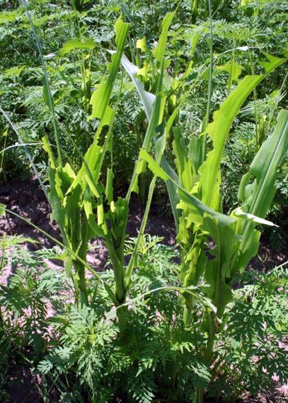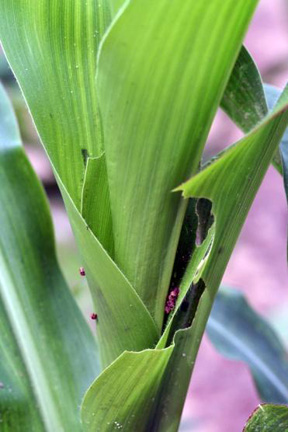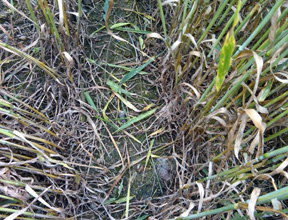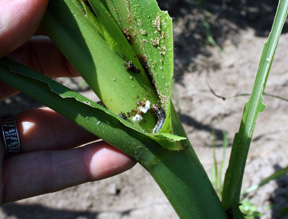March of the Armyworms Part II: Corn
Editor’s note: This article is from the archives of the MSU Crop Advisory Team Alerts. Check the label of any pesticide referenced to ensure your use is included.
True armyworm is a common insect pest of corn, as well as wheat, other crops and turf. True armyworms can differ a great deal in color, depending on their size and what they are eating.
Armyworm does NOT overwinter in Michigan. Moths migrate into the state from the south each season, so infestations vary from year-to-year and field-to-field.
Read this article as aprintable factsheet.
Biology
Moths are attracted to areas of dense grassy vegetation for egg laying. This includes ditch banks, weedy areas in field, grass hay and wheat. Thus corn at field margins or near small grain fields may be at greater risk. If herbicides are used in weedy areas after egg hatch, larvae move and concentrate on the corn, potentially causing major damage.
Signs of infestation
Larvae feed on leaf margins, giving leaves a tattered appearance. In severe cases, all leaf material is eaten, leaving only the leaf midrib. Large cylindrical frass (excrement) pellets in the whorl are another sign that larvae are present. During the day, the larvae themselves hide in the whorl or at the base of the plant.
Because populations vary so much from year-to-year, and among fields, scouting for armyworm is cost effective to find and target fields over threshold. Larvae often hide on sunny days, and come out to feed in the evening or on cloudy days. Thus scouting involves examining whorls and looking around the base of plants for larvae.
Scouting is also used to catch larvae when they are small. The younger the larva, the easier it is to kill. This means a higher percentage of control, and/or the use of a lower rate of insecticide, saving money. Furthermore, larger larvae eat more and are often responsible for the majority of damage. This accounts for fields that are seemingly defoliated overnight.
Threshold
- 25 percent of plants with at least two larvae per whorl.
or
- 75 percent of plants with a single larva per whorl.
Tips when treating
- Direct sprays down into the whorl.
- If larvae are small (under three-quarters of an inch) use a mid-range rate.
- If
possible, spray later in the day. Larvae will crawl across the freshly
treated surface that evening as they climb plants to feed.
- Options include Ambush, Asana, Baythroid, Capture, Intrepid, Lorsban, Mustang, Pounce, Proaxis, and Warrior, as well as Bt products and Entrust for organic production. Products for organic corn must target small larvae to have decent control.
When not to treat
- If larvae are already large (plus-1.5 inches), they are ready to pupate and will stop feeding shortly. Spraying probably will not pay at this point.
Other tips on management that does not involve insecticides
Timely and effective weed control is important to reduce egg-laying in corn.
Armyworms are attacked by a number of biological controls, including birds, insect parasitoids and pathogens. In many years and fields, biological controls keep armyworms in check for free.



 Print
Print Email
Email






